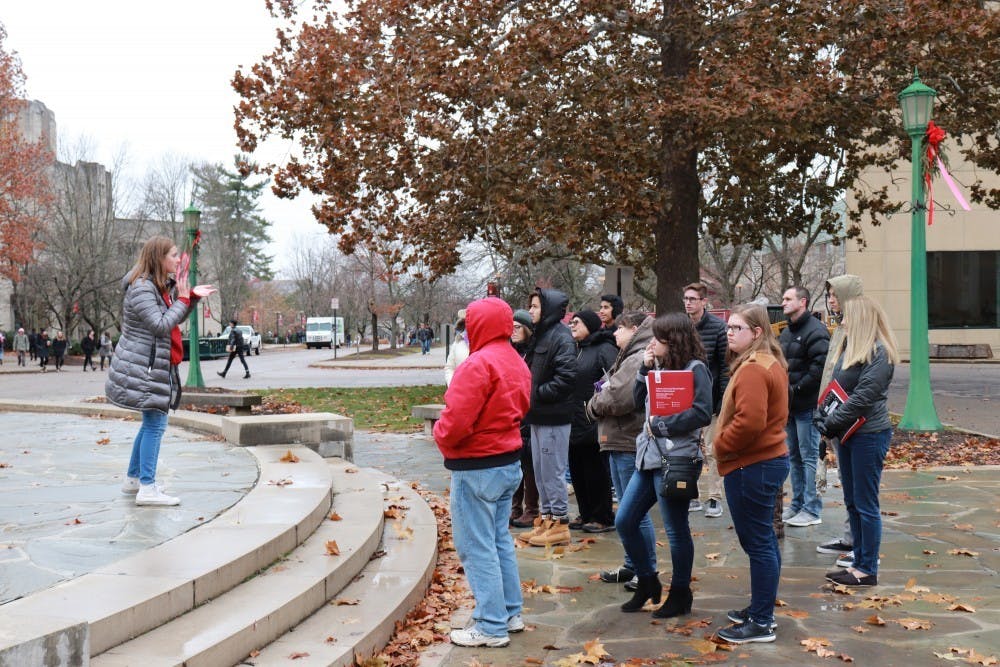A new National Student Clearinghouse Research Center study found that nationwide undergraduate enrollment rates have declined for the second year in a row. There has been a consistent decline since 2020, but the decline has slowed to close to pre-pandemic rates and was not as dramatic as previous years.
The report is part of the research center’s “Stay Informed” series that focuses on enrollment trends since the beginning of the COVID-19 pandemic. According to the report, across the country higher education institutions saw a decline of 1.1% in undergraduate enrollment for the fall of 2022, resulting in a total two-year decline of 4.2%.
With the exception of traditional college-age students (18- to 20-year-olds) and Latinx students, institutions experienced enrollment declines across all demographic characteristics. While undergraduate enrollment fell across all sectors of higher education, the report points out that the decline was most prevalent among four-year institutions.
Sacha Thieme, assistant vice provost and executive director of admissions for the IU Office of Enrollment Management, said despite declining trends, IU-Bloomington has been experiencing steady enrollment numbers. According to the IU University Institutional Research and Reporting center, there were 47,005 students enrolled in the fall 2022 semester. In the fall semesters of 2020 and 2021, there were 43,064 and 45,328 students enrolled respectively.
Related: [IU honored with diversity and inclusion award]
However, Thieme said experts are closely watching enrollment numbers in upcoming years to gauge the impact of a phenomenon broadly referred to as a “demographic cliff.” Enrollment experts predict that beginning in 2025, higher education institutions will see up to a 15% drop in freshman prospective students. This drop is attributed to a significant decline in birth rates in the four years following the 2008 recession.
“We’ve all been watching that closely and institutions have built enrollment roles around understanding that in the coming years, there are going to be fewer people who would be available to go to college,” Thieme said.
Thieme said the pandemic has also had significant impacts on overall college enrollment trends. According to Thieme, increased high school graduation rates offered institutions a level of security against the demographic cliff. However, with disruptions to education due to the COVID-19 pandemic, high school graduation rates have started to decline again. Additionally, Thieme said the pandemic forced many students to reconsider the role of higher education in their lives.
“Students really struggled to meet graduation requirements,” Thieme said. “They were dealing with all the trauma of the pandemic, the civil unrest that we were seeing across the country and a combination of a whole lot of difficult experiences.”
Related: [40 COVID-19 cases reported this week in Monroe County, monkeypox cases remain low]
To prepare for the demographic cliff, Thieme said IU has taken several approaches such as adopting a test-optional admissions policy. Thieme said this policy was adopted in January 2020 to make IU more accessible to changing demographic populations.
Thieme also said the university is emphasizing its name recognition and branding for future recruitment initiatives. For IU freshman Emma Eicher, who plans on going to medical school, IU’s name recognition was a main driver for her decision to attend the university. While she applied to a few community colleges back in her hometown, Eicher said she was certain she would attend a four-year institution like IU.
“Because I’m wanting to go pre-med, I’m going to need a four-year bachelor’s degree,” Eicher said. “IU has a really good health program. I got a good scholarship and just the fact that it has a good program and name is going to be better for medical school applications in the future.”
While undergraduate enrollment has been decreasing, the report reflects declines in community college enrollment across the country have slowed substantially to only 0.4%. The report found community college enrollment for 18- to 20-year-old students increased by 1.4%.
Trudy Weddle, vice chancellor for enrollment services and student success at Ivy Tech Bloomington, said the community college has experienced similar increases in enrollment. According to Weddle, the school has a total enrollment of approximately 3,000 students, with their headcount up 15% from fall 2021. Weddle said one important factor behind this increase is affordability.
“Now more than ever, finances are really being looked at by prospective students and current students alike,” Weddle said. “People want to make sure that the value of education that they’re getting is not going to cost them a lot of money.”
Weddle said much of the increase can be attributed to high dual-enrollment rates, where local high school students can earn both high school and college credits for a course simultaneously. Nationwide, the National Student Clearinghouse report reflects that dual-enrolled high school student enrollment increased 11.5%.
Additionally, Weddle said there is a large population of guest students from IU-Bloomington that takes general education courses through Ivy Tech Bloomington.




